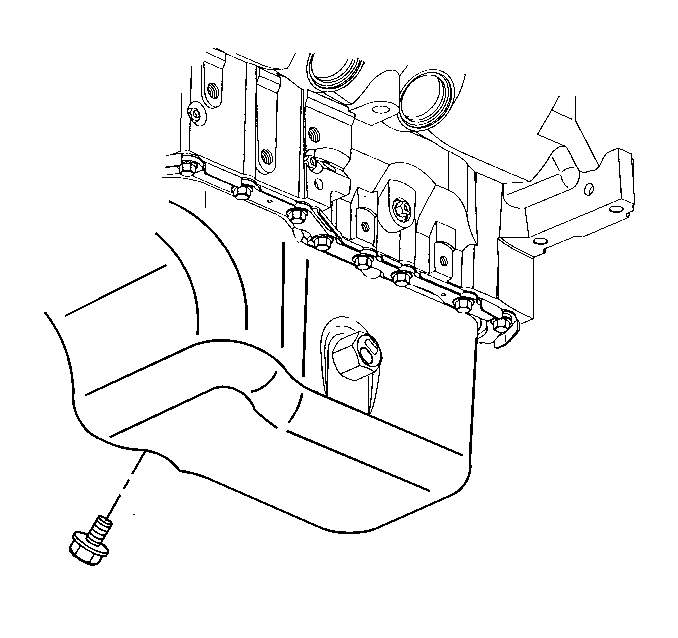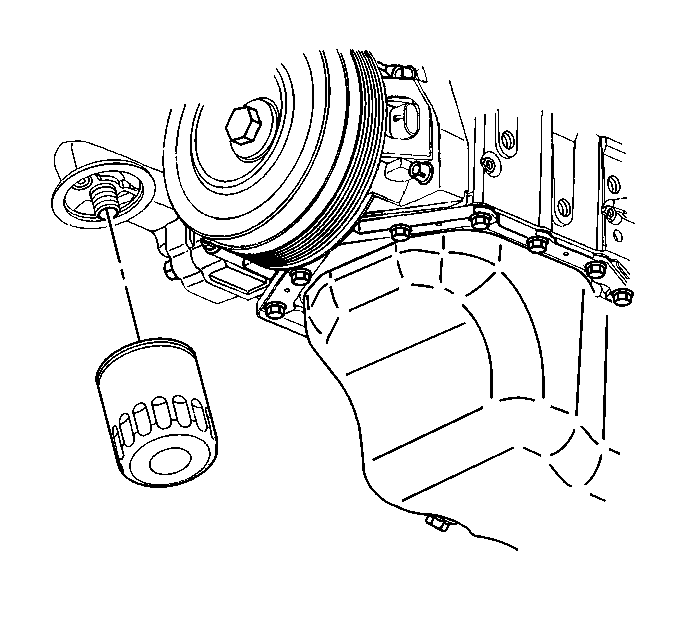For 1990-2009 cars only
Removal Procedure
- Raise and support the vehicle. Refer to Lifting and Jacking the Vehicle.
- Position the oil drain pan under the engine oil drain plug.
- Remove the engine oil drain plug.
- Clean and inspect the engine oil drain plug, repair or replace if necessary.
- Clean and inspect the engine oil drain plug sealing surface on the oil pan, repair or replace oil pan if necessary.
- Remove the oil filter.
- Clean and inspect the oil filter sealing area on the oil filter adapter, repair or replace if necessary. Refer to Oil Filter Adapter and Bypass Valve Assembly Replacement.


Installation Procedure
- Lightly oil the replacement oil filter gasket with clean oil and install the new oil filter.
- Install the new oil filter. Refer to Maintenance Items.
- Install the engine oil drain plug.
- Remove the oil drain pan.
- Lower the vehicle.
- Fill the engine with new engine oil. Refer to Approximate Fluid Capacities and Fluid and Lubricant Recommendations.
- Start the engine.
- Inspect for oil leaks after engine start up.
- Turn off the engine and allow the oil a few minutes to drain back into the oil pan.
- Remove the oil level indicator from the oil indicator tube.
- Clean off the indicator end of the oil level indicator with a clean paper towel or cloth.
- Install the oil level indicator into the oil level indicator tube until the oil level indicator handle contacts the top of the oil level indicator tube.
- Again, remove the oil level indicator from the oil level indicator tube keeping the tip of the oil level indicator down.
- Check the level of the engine oil on the oil level indicator.
- If necessary, readjust the oil level by adding or draining the engine oil.
- Check for oil leaks.
Caution: Refer to Fastener Caution in the Preface section.

Tighten
Tighten the new oil filter to 3/4 to 1 full turn, after the oil filter gasket contacts the oil filter mounting surface.

Tighten
Tighten the plug to 30 N·m (22 lb ft).
